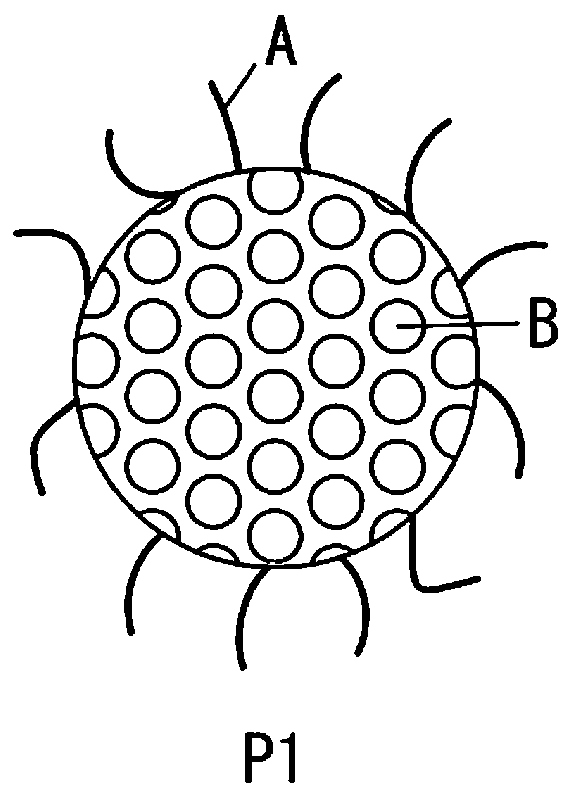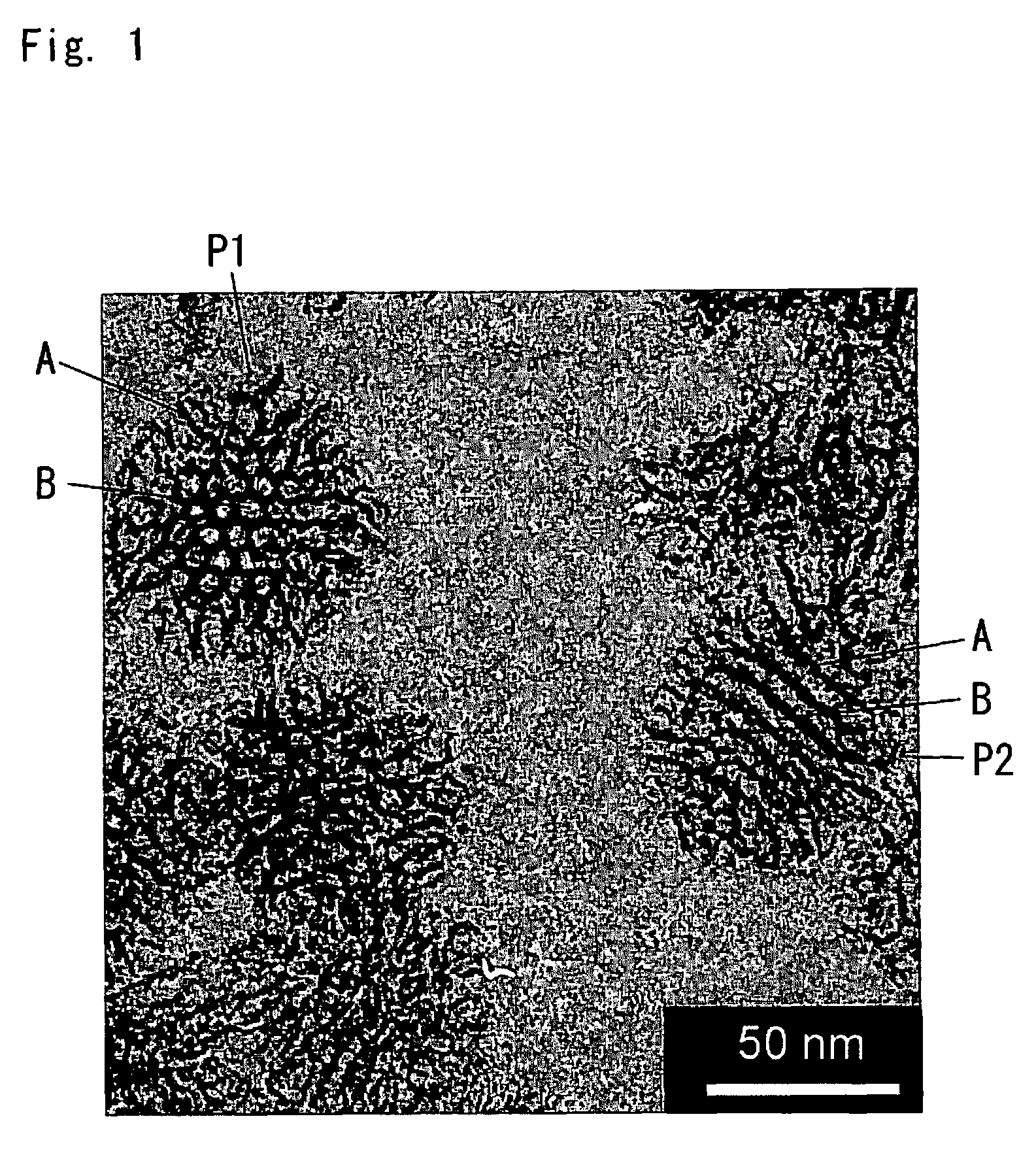Method for producing fine mesoporous silica particles, fine mesoporous silica particles, liquid dispersion of fine mesoporous silica particles, composition containing fine mesoporous silica particles and molded article containing fine mesoporous silica particles
a technology of mesoporous silica and mesoporous silica, which is applied in the direction of group 4/14 element organic compounds, natural mineral layered products, synthetic resin layered products, etc., can solve the problems of reducing the thickness of the outer shell in fine, reducing the strength of the molded article, and reducing the void ratio. , to achieve the effect of improving the dispersibility of media, high void ratio, and increasing the diameter of the pore ratio
- Summary
- Abstract
- Description
- Claims
- Application Information
AI Technical Summary
Benefits of technology
Problems solved by technology
Method used
Image
Examples
example 1
Synthesis of Surfactant Composite Fine Silica Particles
[0107]120 g of H2O, 5.4 g of 25% NH3 aqueous solution, 20 g of ethylene glycol, 1.2 g of hexadecyl trimethyl ammonium bromide (CTAB), 13.43 g of 1,3,5-triisopropyl benzene (TIPB) (TIPB / CTAB mass ratio=20), 1.29 g of TEOS, and 0.23 g of γ-aminopropyl triethoxysilane were mixed in a separable flask with an attached cooling tube, agitator and thermometer, and agitated for 4 hours at 60° C. to prepare surfactant composite fine silica particles.
Mesoporous Particle Formation Step and Preparation of Liquid Dispersion:
[0108]30 g of isopropanol, 60 g of 5N—HCl and 26 g of hexamethyl disiloxane were mixed and agitated at 72° C., and the aforementioned synthesis reaction solution of surfactant composite fine silica particles was added and agitated and refluxed for 30 minutes. These operations served to extract the surfactant and hydrophobic part-containing additive from the surfactant composite fine silica particles, to yielding fine mesop...
example 2
[0111]Surfactant composite fine silica particles were prepared under the same conditions as in Example 1 except that 1.58 of 1,3,5-trimethyl benzene (TMB) (TMB / CTAB mass ratio=4) was used instead of 13.43 g of 1,3,5-triisopropyl benzene (TIPB) (TIPB / CTAB mass ratio=20), and the template (surfactant and hydrophobic part-containing additive) was extracted to obtain fine mesoporous silica particles with trimethylsilylated surfaces. When the particles were washed and dispersed in isopropanol under the same conditions as in Example 1, they showed no precipitation even after 3 months, confirming that dispersibility was maintained. The particle diameter of the fine mesoporous silica particles based on TEM observation was about 50 nm.
example 3
[0112]A synthesis liquid of surfactant composite fine silica particles was prepared under the same conditions as in Example 2 except that no ethylene glycol was added, and the template (surfactant and hydrophobic part-containing additive) was extracted to obtain fine mesoporous silica particles with trimethylsilylated surfaces. When the particles were washed and dispersed in isopropanol under the same conditions as in Example 1, they showed no precipitation even after 3 months, confirming that dispersibility was maintained. The particle diameter of the fine mesoporous silica particles based on TEM observation was about 60 nm.
PUM
| Property | Measurement | Unit |
|---|---|---|
| height | aaaaa | aaaaa |
| height | aaaaa | aaaaa |
| height of | aaaaa | aaaaa |
Abstract
Description
Claims
Application Information
 Login to View More
Login to View More - R&D
- Intellectual Property
- Life Sciences
- Materials
- Tech Scout
- Unparalleled Data Quality
- Higher Quality Content
- 60% Fewer Hallucinations
Browse by: Latest US Patents, China's latest patents, Technical Efficacy Thesaurus, Application Domain, Technology Topic, Popular Technical Reports.
© 2025 PatSnap. All rights reserved.Legal|Privacy policy|Modern Slavery Act Transparency Statement|Sitemap|About US| Contact US: help@patsnap.com



